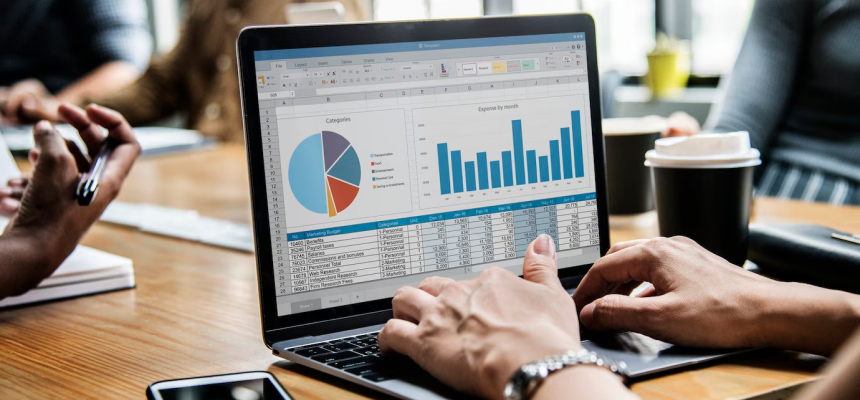Do you find it challenging to understand complex data sets?
Are you looking for a more engaging way to present information to your team or audience?
If so, then data visualization may be the solution you’ve been searching for. This blog post will explore why data visualization is essential and discuss its numerous benefits.
By the end of this post, you’ll better understand how data visualization can help you unlock insights, tell stories, and drive decision-making in your organization.
Reasons Why Is Data Visualization Important?
Data visualization helps businesses make sense of their data and make better decisions. Let’s discuss the benefits in details:
Simplified Data Analysis
Analyzing large datasets manually can be incredibly time-consuming and prone to errors.
However, visualizing data allows us to analyze vast amounts of information quickly and accurately by highlighting key trends, clusters, gaps, and outliers at a glance.
Instead of sifting through endless rows of numbers, we can focus on extracting meaningful insights from our data.
Using data visualization companies can streamline their data analysis processes, freeing up resources for more strategic initiatives and improving overall productivity.
Improved Comprehension
Studies have shown that humans process visual content significantly faster than text or numbers alone.
According to research published by MIT, “People can recognize and identify images that are seen for as little as 13 milliseconds.”
Presenting data visually capitalizes on this natural ability, helping audiences grasp concepts more readily and remember them longer.
Data visualization enables teams to quickly understand complex data insights, facilitating informed decision-making and reducing the risk of misinterpretation.
Enhanced Storytelling
Telling a captivating story with data is crucial for engaging stakeholders and influencing decision-making processes. Data visualization enables us to create compelling narratives around our findings, making persuading others toward specific actions easier.
A well-designed visual representation can evoke emotions, spark curiosity, and inspire change far more effectively than raw data points scattered across a page.
By leveraging data visualization, businesses can craft compelling stories that resonate with their target audience, driving engagement, and ultimately, driving sales and revenue growth.
Faster Decision Making
Quickly interpreting data and conclusions is vital in today’s fast-paced business environment. Visualizations streamline this process by providing instant context and clarity, empowering organizations to act swiftly and decisively based on real-time insights.
In situations where every second counts, data visualization can make all the difference between staying ahead of the competition and falling behind.
By adopting data visualization, businesses can respond rapidly to changing market conditions, capitalize on emerging opportunities, and mitigate potential risks, ultimately gaining a competitive edge.
Increased Collaboration
Collaborative data exploration encourages open dialogue, shared understanding, and collective problem-solving among teams. Interactive visualizations foster this collaborative spirit by offering accessible ways for individuals with varying skill levels to engage with and contribute to data discussions.
Moreover, sharing dynamic visualizations ensures that everyone stays aligned and informed throughout the decision-making journey. However, you need to make sure to follow the best data visualization practices for better results.
Data visualization facilitates cross-functional collaboration, breaking down silos and promoting a culture of data-driven decision-making, where everyone is on the same page.
Actionable Insights
Collaborative data exploration encourages open dialogue, shared understanding, and collective problem-solving among teams. Interactive visualizations foster this collaborative spirit by offering accessible ways for individuals with varying skill levels to engage with and contribute to data discussions.
Moreover, sharing dynamic visualizations ensures that everyone stays aligned and informed throughout the decision-making journey. However, you need to make sure to follow the best data visualization practices for better results.
By applying data visualization, businesses can uncover new revenue streams, identify areas for process improvement, and develop targeted strategies to drive growth and profitability.
Accessibility
Modern data visualization tools cater to diverse user needs, offering features such as zooming, panning, filtering, and sorting that make navigation intuitive and straightforward.
Many platforms also support assistive technologies like screen readers, ensuring equal access for individuals with disabilities. Adherence to accessibility guidelines not only expands the reach but also demonstrates a commitment to inclusivity and social responsibility.
Accessible data visualization tools enable organizations to tap into a broader talent pool, foster a more inclusive work environment, and ensure that data-driven insights are accessible to everyone, regardless of ability.
Scalability
Businesses must adapt to changing market conditions, customer preferences, and technological advancements. Data visualization tools accommodate these shifts gracefully, scaling alongside growing data volumes without sacrificing ease of use or functionality.
Regardless of whether an organization manages terabytes or petabytes of data, visualization techniques provide a consistent approach to exploring, analyzing, and communicating insights.
As businesses grow and expand, data visualization solutions can scale to meet their evolving needs, ensuring that data-driven decision-making remains a core part of their operations.
Competitive Advantage
Companies harnessing the power of data visualization possess a distinct advantage over competitors who rely solely on intuition or historical precedents.
Real-time insight generation empowers organizations to respond proactively to emerging trends, anticipate customer demands, and preempt potential threats.
Leveraging data visualization strategically translates into improved agility, resilience, and competitiveness in the modern enterprise landscape.
Identification of Patterns
One significant advantage of data visualization lies in its ability to reveal underlying patterns that might remain undetected through conventional analytic methods. By representing multi-dimensional data spatially, visualizations enable analysts to discern subtle connections, gradients, and sequences that could hold the key to unlocking new insights and opportunities.
Whether detecting fraudulent activities, forecasting demand fluctuations, or optimizing supply chain operations, pattern recognition forms a cornerstone of effective data-driven decision-making. But make sure to use the right type of data visualization to make the most out of your data.
Recommended Reading:
- Types of Data Visualization
- Tools for Data Visualization
- Best Practices for Data Visualization
- Data visualization principle
- Data visualization services
Need expert consultation or ongoing management for Power BI and other tools? Our team is here to help you maximize your Power BI investment.
Reach out to us at: info@ppnsolutions.com






